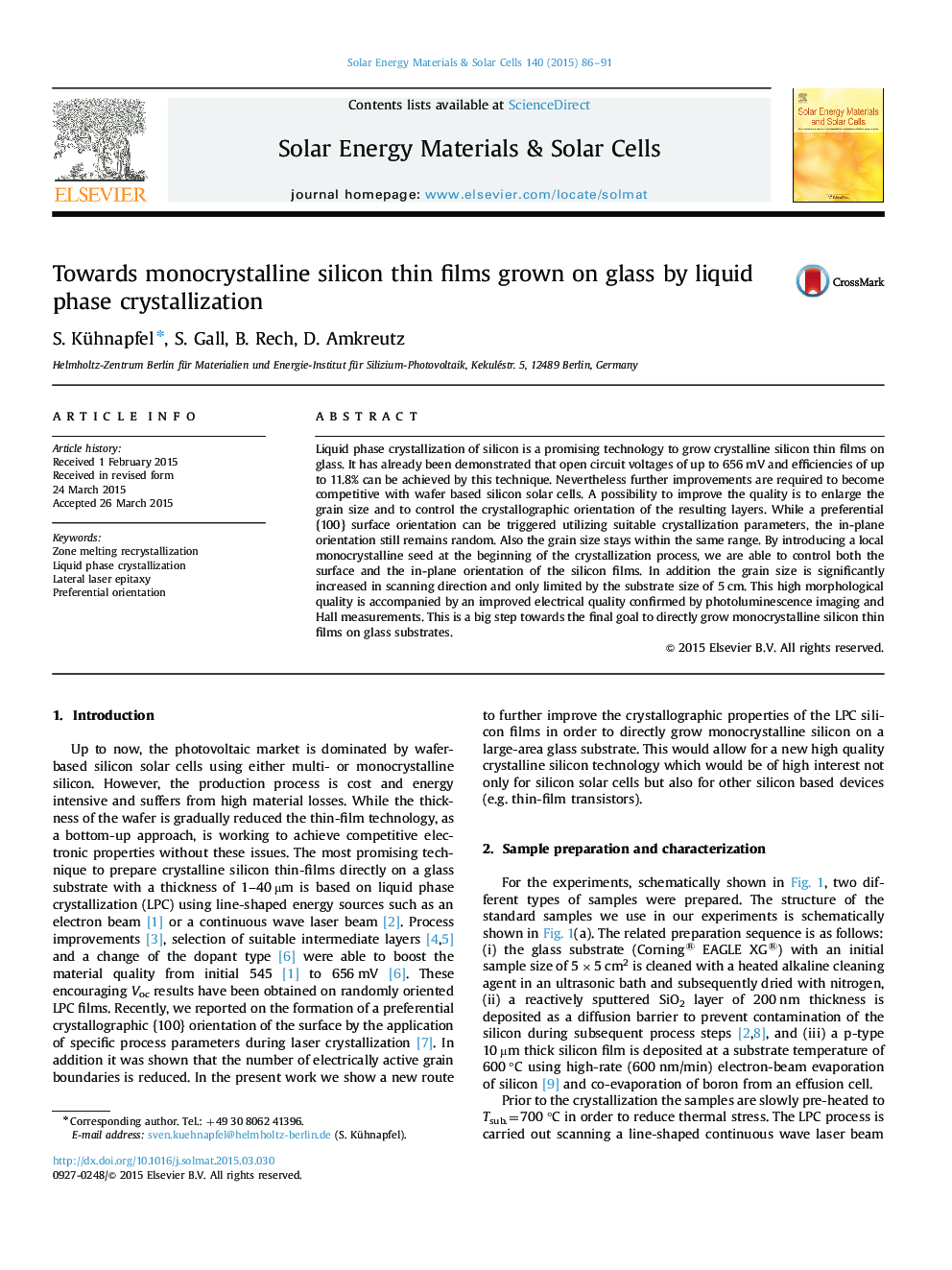| Article ID | Journal | Published Year | Pages | File Type |
|---|---|---|---|---|
| 6535151 | Solar Energy Materials and Solar Cells | 2015 | 6 Pages |
Abstract
Liquid phase crystallization of silicon is a promising technology to grow crystalline silicon thin films on glass. It has already been demonstrated that open circuit voltages of up to 656Â mV and efficiencies of up to 11.8% can be achieved by this technique. Nevertheless further improvements are required to become competitive with wafer based silicon solar cells. A possibility to improve the quality is to enlarge the grain size and to control the crystallographic orientation of the resulting layers. While a preferential {100} surface orientation can be triggered utilizing suitable crystallization parameters, the in-plane orientation still remains random. Also the grain size stays within the same range. By introducing a local monocrystalline seed at the beginning of the crystallization process, we are able to control both the surface and the in-plane orientation of the silicon films. In addition the grain size is significantly increased in scanning direction and only limited by the substrate size of 5Â cm. This high morphological quality is accompanied by an improved electrical quality confirmed by photoluminescence imaging and Hall measurements. This is a big step towards the final goal to directly grow monocrystalline silicon thin films on glass substrates.
Related Topics
Physical Sciences and Engineering
Chemical Engineering
Catalysis
Authors
S. Kühnapfel, S. Gall, B. Rech, D. Amkreutz,
